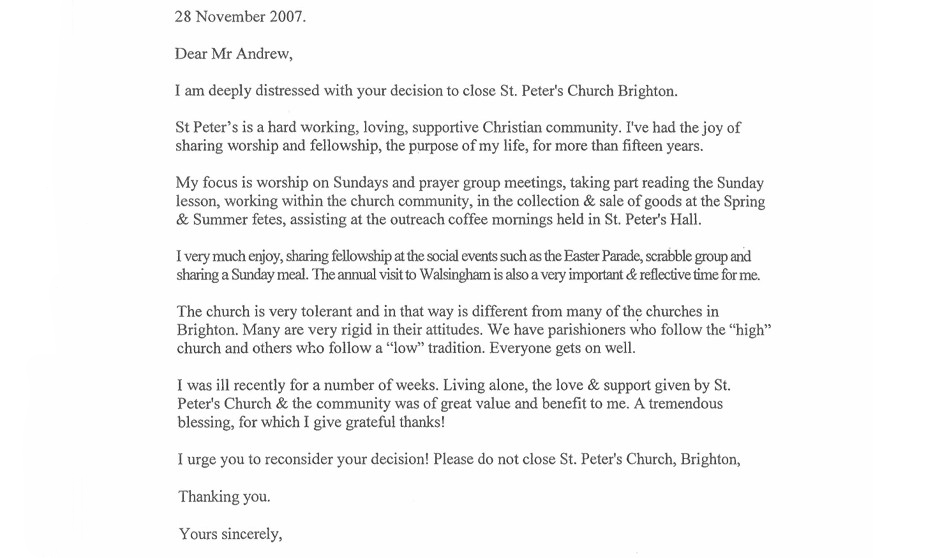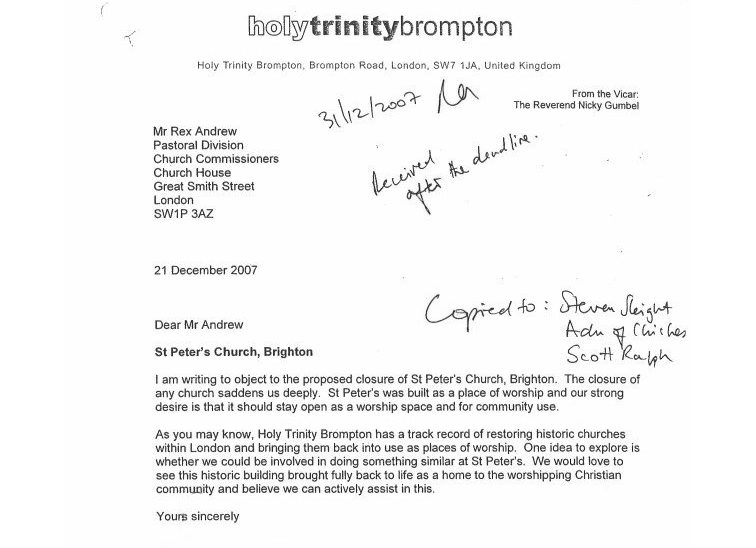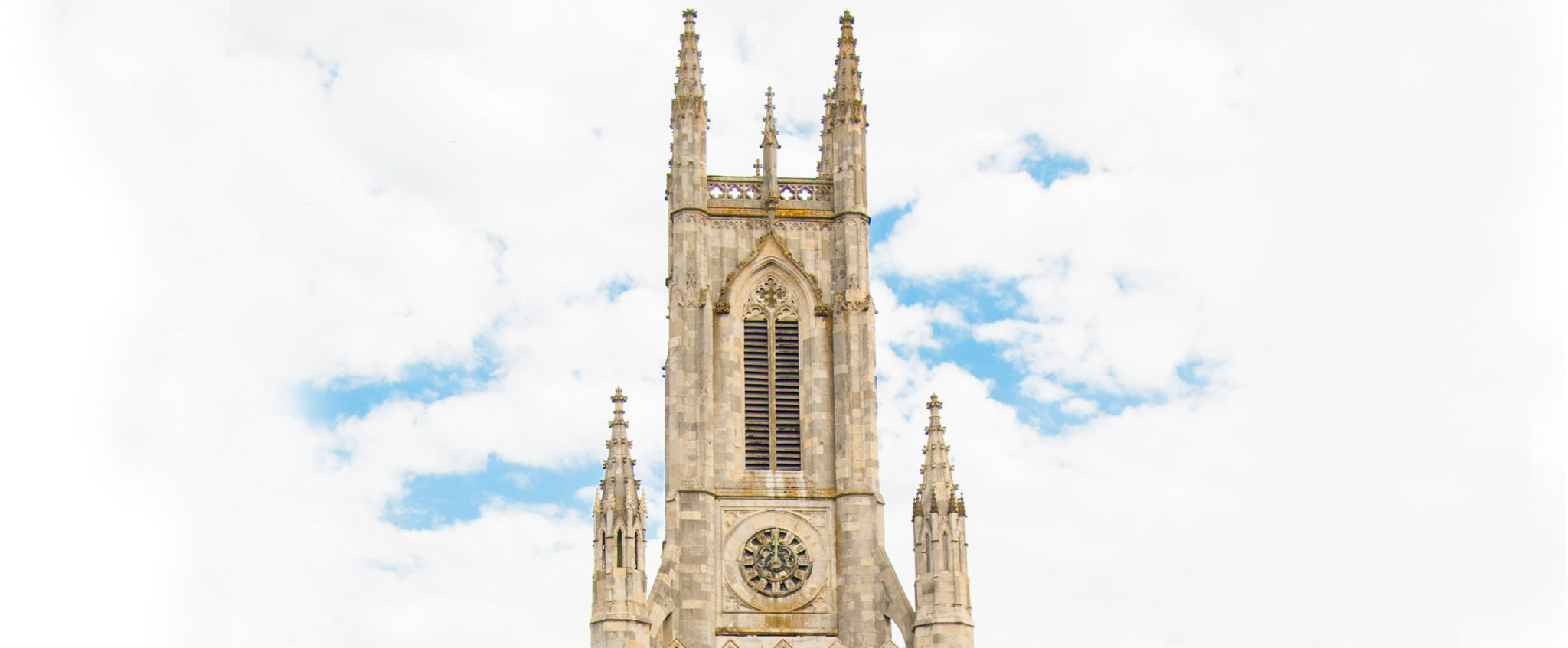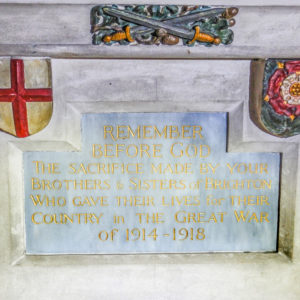Saving St. Peter’s
By B. van Cleve
In 2007 the ‘Diocese of Chichester, the Pastoral and Redundant Churches Division’ took the decision to close down St. Peter’s Church Brighton.
This decision triggered some heated discussions. Both sides had valid arguments. The text below attempts to give a concise overview over these arguments. The passages in italics are quotes from the more than 400 pages long collection of public responses to the threat of imminent closure of St. Peter’s Church, Brighton.
In Favour of the Closure
Those in favour of the decision saw mainly the financial burden and the dwindling congregation. For years there had not been a permanent incumbent in St. Peter’s. The cost of maintenance and day to day running was mounting and was seen as impossible to meet.
Some voices said that “the Anglican Church is not a historic society for the preservation of ancient buildings and should never become one”. It was seen as squander or wastage of resources to keep the church going. Some even pointed out that “worship can happen in people’s homes, without any need for big church buildings”.
Advocates for the closure of St. Peter’s were in favour of a swift transition to minimise the trauma for individual churchgoers. Maybe there was also the hope that surrounding churches might benefit from the closure of St. Peter’s. It may be worth noting that not only St. Peter’s was recommended for closure. An additional 14 churches were earmarked for redundancy in the region of Brighton.
In Favour of Saving the Church
At the same time there was a general outcry for the salvation of St. Peter’s church, which led to the formation of the Friends of St. Peter’s Church, where Jean Calder played a pivotal roll.
The reasons for this outcry were manifold. The town council was not in favour of the demolition of St. Peter’s. This church had been the “centre of the town”, a “landmark”, it had been described as one of the “jewels in the city’s crown of churches”, or as the “noblest ornament of the town”. It had been called a “fine piece of architecture”.
People expressed their belief that the demolition of St. Peter’s would lead to an “irreversible damage to the appearance of the area”. It was seen as an “act of folly” to demolish this “wonderful church”. One person even expressed a willingness to “pay more taxes”, if this would help maintain the cultural and historical diversity of Brighton. Thousands of signatures were collected against the closure of this church.
There was an abundance of ideas on the future use of the building, if it could be saved. They reached from transforming it into an “art gallery” to a “school building”, from a “community centre” to a “place for musical performances” because of the acoustics of this building and its musical tradition. Some people even saw the possibility to preserve part of the church for spiritual use, while other parts should be rented out in some way or another to support the maintenance of the whole building.
For members of the congregation of St. Peter’s this was a difficult time. They saw this church as their spiritual home. Some of them had worshipped here for a long time, 20, 30, and even up to 50 years.

They voiced their grief in saying: “You have taken the Parish Church of Brighton’s name from us, now you want to take our church from us as well”. Or “what right do you have to close us down” – and then adding: “of course, it won’t affect you as your church is not closed down”.
By some people it was seen as a “misuse of the power by Bishops up and down the country”. The notion was that the church had been “actively run down and under-resourced”, therefore it was in the state it was in now. And the fact that “no permanent incumbent had been appointed for years” did seem to underline this suspicion.
Even the city council of Brighton could not do anything against the decision of the Bishop and the Church Commissioners to close St. Peter’s down, have it demolished and the land used for re-development.
At the time very few people saw a chance to save the church and make it a spiritual centre again, where worship and teaching and care for the poor would flourish. The cost seemed insurmountable. But there were some who had not given up hope to save the church. “Bring in an evangelical Anglican vicar, who would preach the Gospel”, was one of the ideas.
Somebody else looked for help from further afield. It was Pam Haith. She simply cut out the article in the Argus about the feedback on the future closure of St. Peter’s Church, put it into an envelope and sent it to an Anglican vicar in London with the remark, “Do you think there’s something that we can do about this?” Here is the answer:

Now, in 2025, St. Peter’s Church is again a centre of worship and teaching and care for the poor.
The cost for maintaining the building is still very high. But the spiritual life is flourishing. Several other churches in Brighton and in the surrounding counties are benefitting from support by St. Peter’s. The church that had been regarded as not worth saving now helps to save others.
The more than 400 pages long collection of public responses to the threat of imminent closure of St. Peter’s Church was assembled by the Friends of St. Peter’s Church and can be found in the appendix of their Annual Report 2008 (a copy in searchable PDF format exists).







‘The Anglican Church is not a historic society for the preservation of ancient buildings and should never become one.’
Saving St. Peter's